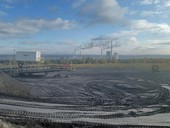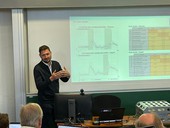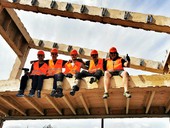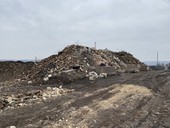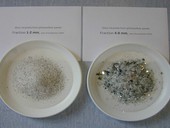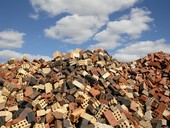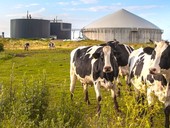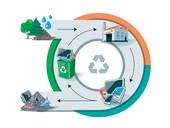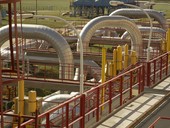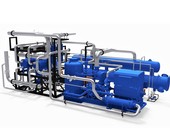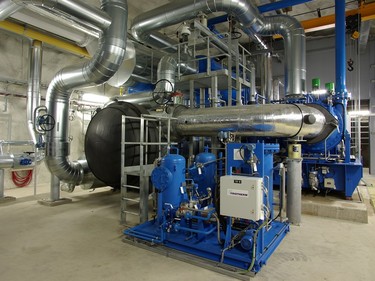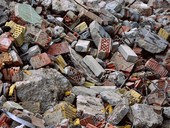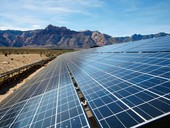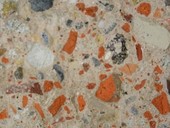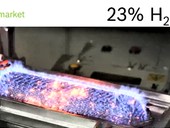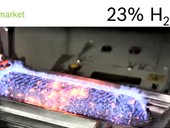The aim of the methodology is to establish a procedure for the safe use of fly ash from coal combustion in construction products. The development of this methodology was part of project no. FW01010195, titled “Advanced Manufacturing Technologies for the Strategic Utilization and Storage of By-Products of Energy Production (BEP)”. The methodology is intended to serve as a basis for decision-making regarding the handling of these materials for companies engaged in the production of construction products containing fly ash, state administration officials, the Czech Environmental Inspectorate (ČIŽP), certification bodies, regulatory authorities, and other relevant stakeholders.
Archiv článků od 8.3.2021 do 17.7.2025
This article presents a simulation analysis conducted at the Institute of Environmental Engineering at CTU, as part of the international exercise IEA EBC Annex 82. The aim of the joint exercise, which involved more than ten international research teams from different sectors, was to test and compare different approaches towards achieving energy flexibility in buildings on the basis of a unified exercise assignment. The Czech team based its study on a comprehensive simulation of the energy behaviour of buildings, including a detailed numerical model of the heating, hot water preparation, cooling and ventilation systems. The model was used to study the building potential for providing energy flexibility and future responsibilities of building operators in the context of smart energy grids.
The building industry produces more than 30% of the European Union's waste. To reduce this waste, buildings should be designed in line with the principles of the circular economy, so that the products and materials they contain can be removed and reused at the end of the building's life cycle. Therefore, a modular system has been designed, the load-bearing part of which is made up of prefabricated frames composed of plywood. To verify the actual reuse potential of the structure, an experiment was carried out in which a house was assembled and operated for one year. After dismantling the house, the reuse potential of each element was assessed. In this paper, the potential of the main elements of the system for reuse, which overall amounts to 98% by weight of materials used in the system, is described, together with the key barriers to material recovery of the dismantled elements.
The article discusses the history of sanitation installation, i.e. water installation, drainage systems inside buildings and gas installation pipework for buildings from the earliest times to 1948 and is primarily focused on the history of this field in the territory of the former Czechoslovakia. It also deals with the history of the plumbing trade, contemporary legal regulations, technical standards and professional literature on the territory of the former Czechoslovakia.
The efficient classification of materials in construction debris is crucial for their sorting and further valuable utilization. Current methods, whether relying on force sorters or separators, are reaching their limitations. In many cases, construction and demolition waste materials end up being downcycled or even sent to landfills. Our contribution is divided into two parts. The first part presents facts relating to the production of construction and demolition waste in the EU and justifies the urgency of responsible waste management. It also recaps the development of indirect methods of classification and briefly describes types of suitable sensors for material observation and algorithms for data evaluation. The second part describes our classification solution, developed by the faculties of civil engineering and electrical engineering at CTU in Prague. This method is based on the evaluation of data obtained with ordinary RGB cameras.
The article presents a project submitted by TAČR in the Environment for Life section 2. The goal of the project is to find the application of recycled glass fractions from photovoltaic panels in the field of construction. The project focuses on three basic silicate building materials, which are able to incorporate glass recyclate shards into their structure during the hydration, firing and melting process. The paper specifies the first results of testing possibilities for use of glass recyclate from photovoltaic panels for concrete masonry units. It compares particular recipes and its physical and mechanical properties with the main focus on the compressive strength. It then compares the values of these recipes with the values of commonly used composite materials for masonry units without recyclates.
The paper deals with the analysis of mineral construction and demolition waste management in the Czech Republic between 2007 and 2022. The analysis is based on data from the Czech Environmental Information Agency. It has been shown that the production of recycled mineral construction and demolition waste has quadrupled in this period and that the share of recycled mineral construction waste in the market of mineral materials for the construction industry is around 15%.
In the presented paper, the results of the use of modified gypsum-based recyclate obtained from construction and demolition waste are analyzed. The selected recyclate comes from a real construction site of Moravostav Brno, a.s. and was subjected to modifications using a newly developed gypsum plasterboard recycling line. During the research, the influence of the recyclate treatment, especially in terms of grinding fineness, on the key properties of the dry gypsum mixture was monitored. Substitution of gypsum (or gypsum binder) in the mix was carried out in proportions of 10, 25 and 50 wt%. The resulting properties, such as bulk density, flexural tensile strength, compressive strength, volumetric changes and shrinkage, were monitored after 7 days of sample production.
In a follow-up step, gypsum blocks using treated gypsum recyclate and the designed dry gypsum slurry were semi-produced at Moravostav Brno, a.s. in January 2024. A segment of the wall was constructed from the blocks.
The results obtained clearly show that with appropriate treatment, it is possible to effectively replace part of the gypsum binder in the dry gypsum mixture using modified gypsum recyclate. These findings provide important information for the advanced use of gypsum plasterboard recycling in the construction industry, while highlighting the potential for more sustainable and environmentally friendly practices in building materials.
By digitizing and automating processes throughout the building life cycle, the goal is to optimize the use of information so that it can be easily used either to reduce waste from buildings (waste prevention) or to have sufficient information about the materials and products used in the building at the end of its life cycle or as part of various renovations or retrofits. At the same time, improving the planning and management of the waste generated is a key effort. The paper presents the results of the European RECONMATIC project in this area, which progressively links information efficiency approaches with BIM processes. As such, the project has a broader focus and represents a paradigm shift in the management of C&D materials, from the traditionally conservative approach to C&D waste, to a similarly conservative approach of the construction industry, to construction production that seeks to achieve high waste recovery rates, and to the adoption of a responsive approach to waste recovery. The technologies to be used in this project (creating and working with a digital twin of the building, blockchain-based applications, precision prefabrication, efficient sorting through automation and robotics, etc.) are part of the themes that the project focuses on.
The article thoroughly describes the role of a corporate ecologist in complying with environmental regulations within businesses. In addition to traditional areas such as waste management, packaging materials, chemicals, and accident prevention, it now focuses on ESG reporting. It emphasizes trends towards sustainable waste management and the circular economy. The text analyzes strategies for waste prevention, trends, and innovations in their processing. Finally, it highlights the importance of education and awareness in this field.
The composition of natural gas in the Czech distribution system, or the Czech part of the former Czechoslovak system, has not changed too much over time to date. Almost all of the gas was that supplied from the former Soviet Union and, following its disintegration, from Russia mainly to western European countries and met their requirements. The situation completely changed in 2022 when gas supply from Russia to the EU was reduced and large quantities were replaced with LNG. In this context, the contribution discusses the changes in the composition of the natural gas distributed in the Czech Republic.
High-temperature water-to-water compressor heat pumps with different refrigerants and configurations can be used in district heating systems operating at temperatures between 60 and 120 °C. Part 1 describes the development of installations in Europe and the current state of development, including an overview of the market offer.
High-temperature water-to-water compressor heat pumps with different refrigerants and configurations can be used in district heating systems operating at temperatures between 60 and 120 °C. Part 1 describes the development of installations in Europe and the current state of development, including an overview of the market offer.
The article provides an overview of the development of construction and demolition waste recycling in the Czech Republic in the period between 2007 and 2020. Waste group 1701 concrete, bricks, tiles and ceramics analyzed in more detail. Recycled C&DW from this group are assessed in terms of the possibility of their use as concrete filler. Attention is also paid to group 170504 – soil and stones without hazardous substances. A significant increase in recycling has been demonstrated for this group in recent years. In conclusion, the ratio of recycled C&DW and extracted natural mineral raw materials in the construction industry is analyzed.
A nuclear power plant is a powerful and stable source of electricity. Full replacement of such source with photovoltaics is not easy. We calculated how much PV panels and batteries would be needed for replacement and how much it would cost. The calculation in the article is interactive and the individual calculation parameters can be modified.
The paper deals with the possibilities for use of glass recyclate from photovoltaic panels for concrete masonry units. It compares partivular recipes and its physical and mechanical properties with the main focus on the compressive strength. It then compares the values of these recipes with the values of commonly used composite materials for masonry units without recyclates.
This article deals with the possibility of using masonry aggregate from construction and demolition waste. The article summarizes the properties of concrete with a laboratory-optimized recipe with a full replacement of natural aggregate with recycled masonry aggregate. Testing of concrete samples was carried out according to valid standards. The result is a mixture with optimized properties for the production of construction parts.
The authors analyze the possibility of burning natural gas with an admixture of hydrogen in gas appliances. The positive and negative aspects of the hydrogen content in natural gas and recommendations for its mixing into the natural gas distribution system are presented.
The contribution describes the effect of hydrogen content ranging from 0 to 25 mol% in a mixture with natural gas on burning in household appliances. Gaseous fuels with similar combustion characteristics, in particular Wobbe index and burning velocity, can only be used in a particular household appliance as a substitute. The various chapters describe the effect of hydrogen content in natural gas on the following: Wobbe index, composition of exhaust gases; emissions of CO2, CO and NOx; burning velocity; output of burners/energy demand of appliances, efficiency of appliances; flame stability; and temperature of combustion. Recommendations on hydrogen content in natural gas for household appliances, accepted from reference literature, are set out there. In conclusion, the authors discuss the pluses and minuses of hydrogen content in natural gas and offer recommendations for hydrogen injection into natural gas distribution systems from the perspective of burning these mixtures in household appliances.
zpět na aktuální články
